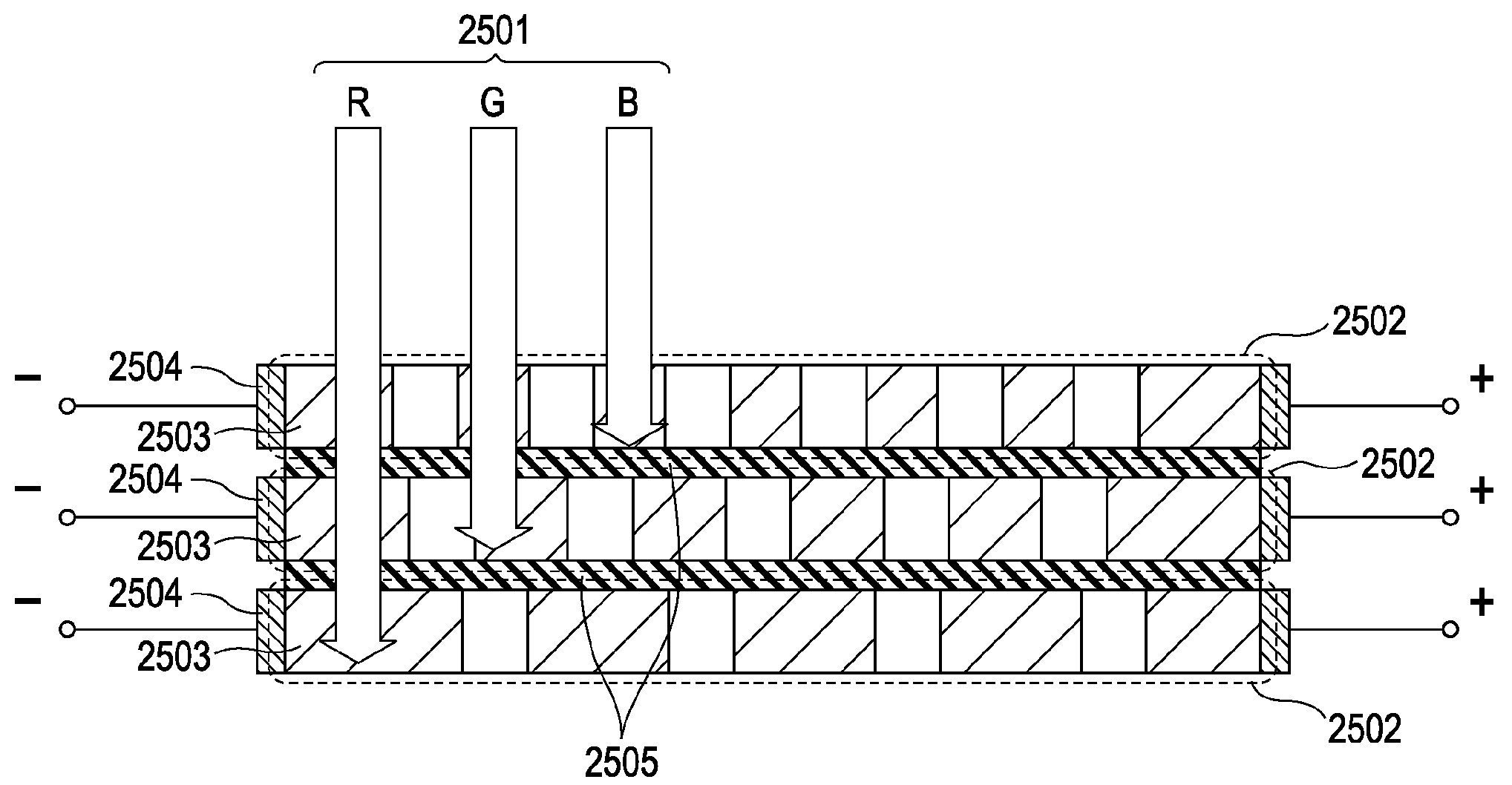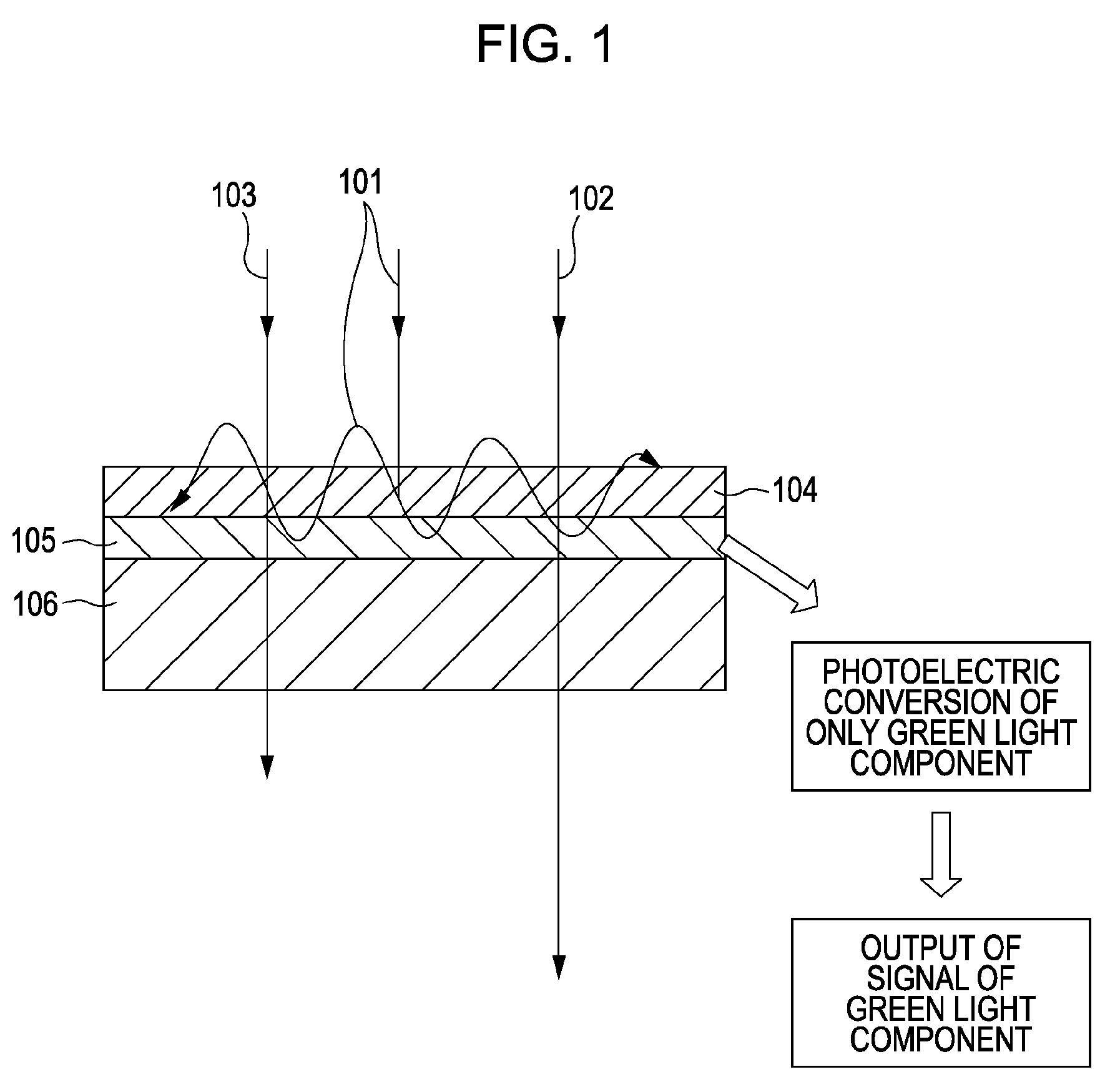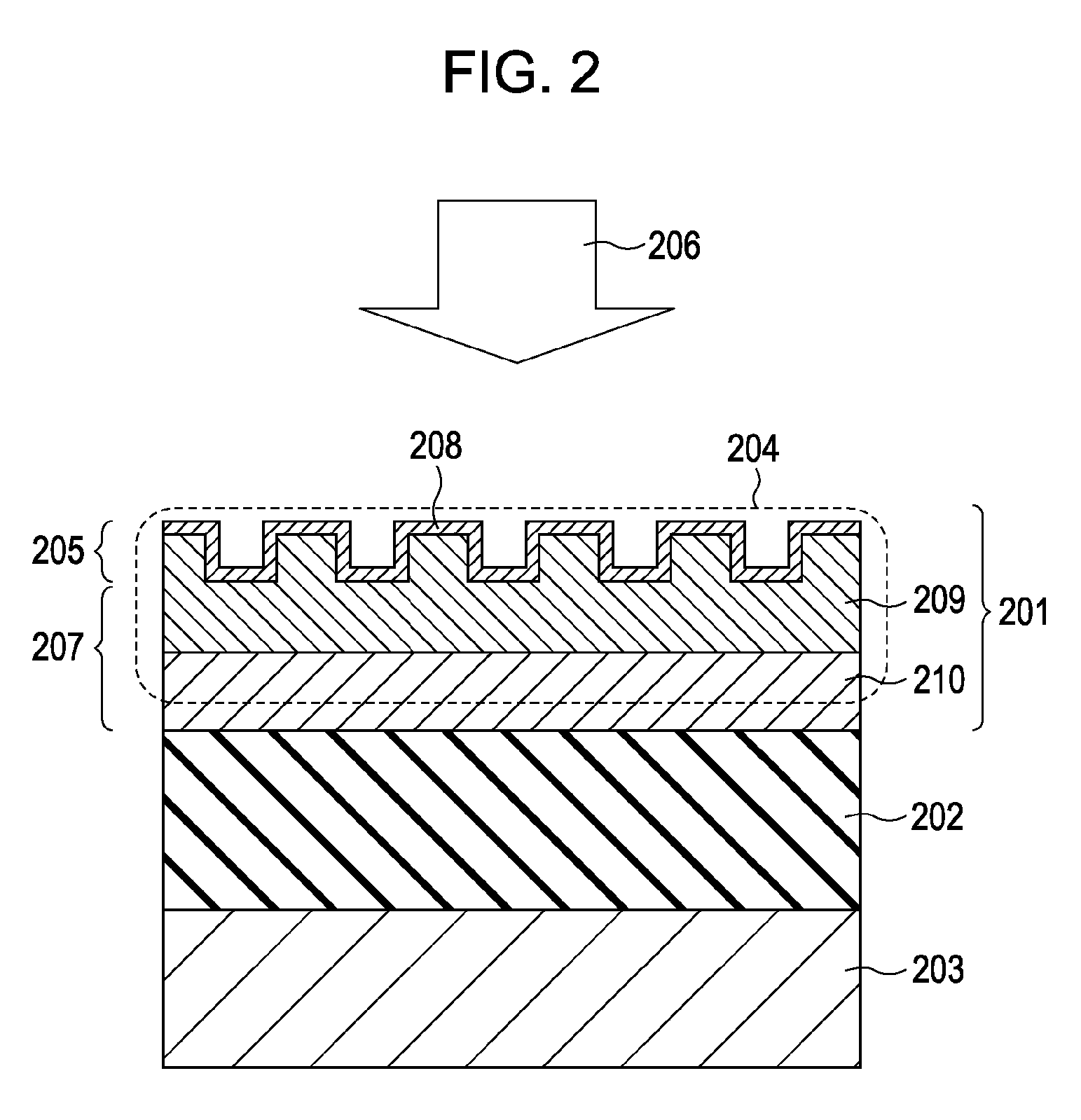Photo detector, image sensor, photo-detection method, and imaging method
a technology of image sensor and detector, which is applied in the field of photo detector, image sensor, photodetection method, imaging method, can solve the problems of loss of light caused by color filter, difficulty in reducing cost, so as to achieve satisfactory color separability, reduce device thickness, and suppress color mixing
- Summary
- Abstract
- Description
- Claims
- Application Information
AI Technical Summary
Benefits of technology
Problems solved by technology
Method used
Image
Examples
first embodiment
[0094]FIG. 2 shows an example of a photo detector according to the first aspect of the present invention. A photoelectric conversion (layer) area 204 is provided in a silicon-on-insulator (SOI) substrate composed of a Si layer 201, a SiO2 layer 202, and a Si substrate layer 203. A periodic structure 205 composed of two-dimensional irregularities is formed on the top surface of the photoelectric conversion region 204. Depressions of the periodic structure may reach the insulating layer of the SOI substrate or may not reach the insulating layer. A protective film may be optionally provided on the top surface.
[0095]When incident light 206 is incident on the photo detector of this embodiment, the light is diffracted by the two-dimensional periodic structure 205 provided on the surface of the photo detector. A light component in a specified wavelength range, depending on parameters of the periodic structure 205, generates guided-mode resonance. Guided-mode resonance is a phenomenon in wh...
second embodiment
[0103]FIG. 4 shows another embodiment of the photo detector of the present invention. In the photo detector shown in FIG. 4, a photoelectric conversion region 404 is provided in a silicon-on-insulator (SOI) substrate composed of a Si layer 401, a SiO2 layer 402, and a Si substrate layer 403. An insulating film (protective film) 405 made of SiO2 is provided on the top surface of the photoelectric conversion material. Furthermore, a two-dimensional periodic structure 407 made of amorphous Si 406 is formed on the insulating film 405. When incident light 408 is incident on the photo detector of this embodiment, the light is diffracted by the two-dimensional periodic structure 407 provided on the surface of the photo detector. A light component in a specified wavelength range, depending on parameters of the periodic structure 407, generates guided-mode resonance. Guided-mode resonance is a phenomenon in which light diffracted by a periodic structure is coupled with guided light, thereby ...
third embodiment
[0109]An embodiment of an image sensor according to the first aspect of the present invention is shown in FIGS. 6A and 6B. FIG. 6A is a plan view of a light-receiving surface constituting a surface on which light is incident. FIG. 6B is a cross-sectional view taken along broken line VIB-VIB in FIG. 6A. In the device shown in FIGS. 6A and 6B, a plurality of photo detectors 601 for performing a two-dimensional imaging are arranged. An irregular periodic structure is formed on the surface of each of the photo detectors 601. An area 602 that resonates with a red (R) light component, an area 603 that resonates with a green (G) light component, and an area 604 that resonates with a blue (B) light component are provided. For example, by forming periodic structures on the basis of the parameters described in the first embodiment, peak wavelengths can be provided at 450 nm, 550 nm, and 650 nm.
[0110]As described in the first embodiment, regarding incident light 605 diffracted by the irregular...
PUM
 Login to View More
Login to View More Abstract
Description
Claims
Application Information
 Login to View More
Login to View More - R&D
- Intellectual Property
- Life Sciences
- Materials
- Tech Scout
- Unparalleled Data Quality
- Higher Quality Content
- 60% Fewer Hallucinations
Browse by: Latest US Patents, China's latest patents, Technical Efficacy Thesaurus, Application Domain, Technology Topic, Popular Technical Reports.
© 2025 PatSnap. All rights reserved.Legal|Privacy policy|Modern Slavery Act Transparency Statement|Sitemap|About US| Contact US: help@patsnap.com



